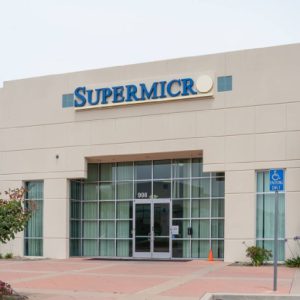
Aspiring for a career in the tech sector? One of the best ways to get your foot in the door will be to attend one of the top universities which specialise in the technology field you most aspire to work in.
Some of the biggest names in the industry attended top universities around the world, which goes to show that your choice of study could play a big part in your future career.
CBR lists the top universities around the world for tech courses. The data is collected from the complete University League Table 2018.
Massachusetts Institute of Technology
The Massachusetts Institute of Technology (MIT) is a private research university, and has often been noted as one of the world’s most prestigious universities.
For instance, the Times Higher Education ranked the Massachusetts Institute of Technology in 2nd place for the World’s Most Prestigious Universities 2016.
MIT has five schools; Science, Engineering, Architecture and Planning, Management and Humanities, Arts and Social Sciences. There is also one college known as Whitaker College of Health Sciences and Technology.
The Institute is considered most popular for its research and education in Engineering, Physical Sciences, Economics and Management. In particular, MIT’s School of Engineering has been ranked first for several years in numerous lists and guides such as the QS Top Universities list.
 Notable past students and accomplishments include former student Dan Dorsch, who designed the world’s first high efficiency clutch-less transmission for hybrid vehicles. Dorsch is also currently working with automotive manufacturers to bring the technology to mass market vehicles.
Notable past students and accomplishments include former student Dan Dorsch, who designed the world’s first high efficiency clutch-less transmission for hybrid vehicles. Dorsch is also currently working with automotive manufacturers to bring the technology to mass market vehicles.
Another well-known tech leader that studied at MIT is the former president of International Production at Sony Pictures Television, Andrea Wong. Wong graduated from MIT in 1988 with a degree in Electrical Engineering.
Drew Houston, Founder and CEO of Dropbox is also a former student of MIT, as is astronaut Buzz Aldrin.
MIT is currently ranked with a score of 98.6 percent in the ‘World’s Best Universities for Engineering and Technology, 2017.’
California Institute of Technology
The California Institute of Technology, also known as Caltech, is a private doctorate-granting university based in California, United States.
Caltech has six divisions and is most popular for its strong focus on Science and Engineering. These divisions include Biology and Biological Engineering, Chemistry and Chemical Engineering, Engineering and Applied Science, Geological and Planetary Sciences, Humanities and Social Sciences and Physics, Mathematics and Astronomy.
 The university is also frequently ranked among the best universities in the world in such rankings by Times Higher Education, QS Top Universities and Forbes.
The university is also frequently ranked among the best universities in the world in such rankings by Times Higher Education, QS Top Universities and Forbes.
Judging by its consistent position in university league tables and the record of department offerings that are provided at Caltech, it is clear that the University has earned its position thoroughly.
For example, in 1934 Caltech was elected for the Association of American Universities and has since then remained as a highly targeted research university for its expertise in STEM fields.
Stephen Hawking, well-known English Physicist worked at Caltech as a visiting professor.
The Senior Vice President of well-known chipmaker Qualcomm, Charles E.Wheatley went to Caltech University.
A well-known UK university makes the grade on the next page
Stanford University
The Stanford University School of Engineering has nine departments and over 240 faculties. These include Aeronautics and Astronautics, Bioengineering, Chemical Engineering and Civil and Environmental Engineering.
The university also offers degree programs in Computational and Mathematical Engineering (ICME), Computer Science, Electrical Engineering, Management Science and Engineering, Materials Science and Engineering and Mechanical Engineering.
 Its School of Engineering was set up in 1926, which followed with the addition of the different departments as the years progressed.
Its School of Engineering was set up in 1926, which followed with the addition of the different departments as the years progressed.
With seven schools across the university, Stanford University consistently ranks highly in university league tables such as QS Top universities for its STEM, business and law programs.
Stanford University has collected a total of 19 Nobel prizes and has also been cited by The Times Higher Education as the top university for producing Nobel laureates.
The university has schooled current entrepreneurs and billionaires such as the likes of Larry Page and Steve Ballmer.
Page, co-founder of Google, licensed Google’s page-rank technology through Stanford University.
University of Oxford
The University of Oxford has several technology-related departments which range from Engineering and IT to Computer Science.
These include the Department of Engineering Science, Oxford Institute of Biomedical Engineering, and Department of Computer Science.
 The Oxford University Innovation, which was originally established in 1987 as Isis Innovation, is a British technology transfer company that was redeveloped in 2016 with the new name to help staff and students apply their research and expertise for the wider social and economic benefit.
The Oxford University Innovation, which was originally established in 1987 as Isis Innovation, is a British technology transfer company that was redeveloped in 2016 with the new name to help staff and students apply their research and expertise for the wider social and economic benefit.
The company has since delivered different projects and patents to boost environmental sustainability, with current plans being made to explore the potential of smart home technology use within the office.
It also offers an invention fund that gives donors the opportunity to support the development of technology in the university, while also embracing its innovative infrastructure.
Diffblue, an AI for code team, is a start-up company known as an Oxford University spin-out. The company uses core AI to build a mathematical model of any code base to develop advanced coding of tasks.
University of Cambridge
The University of Cambridge’s School of Technology is one of six schools at the university.
Cambridge University’s School of Technology has five departments, which include the Department of Chemical Engineering and Biotechnology, the Computer Laboratory, the Department of Engineering, Judge Business School and the Cambridge Institute for Sustainability Leadership.
The university also delivers regular research technology and digital research methods to emphasise on what comes out of the industry and further develop its department as a whole.

It is a top university because people such as the likes of Sir James Dyson set up an Engineering hub, also referred to as an innovation powerhouse to give students at the university the space to prototype, invent and collaborate on research.
Michael Burrows, developer of the Internet’s first search engine, completed his PhD in Computer Laboratory at the University of Cambridge.
In 1991, John Daugman, who was an employee at the University of Cambridge developed a patent for an Iris recognition algorithm. It was filed and later became the basis for all publicly deployed Iris recognition systems.






